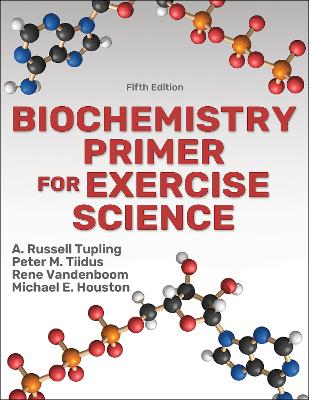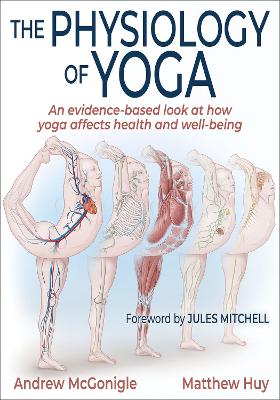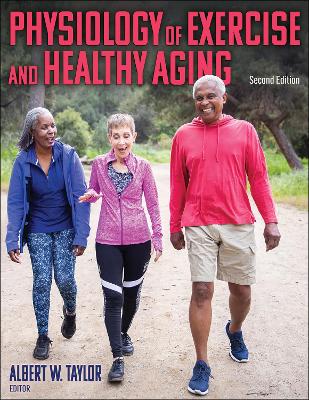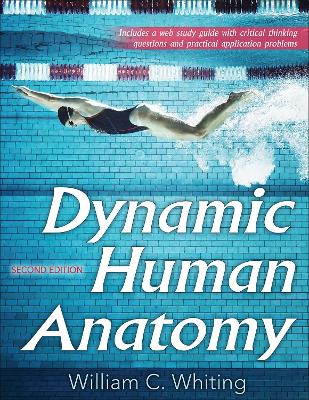Applied Sport Mechanics
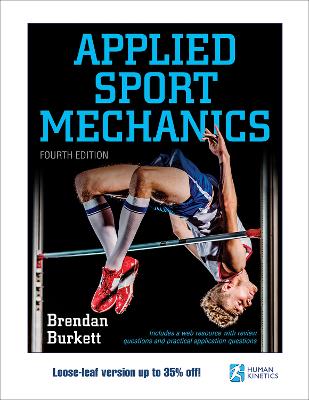 -15%
portes grátis
-15%
portes grátis
Applied Sport Mechanics
Burkett, Brendan
Human Kinetics Publishers
06/2018
264
Loose-leaf
Inglês
9781492564089
15 a 20 dias
885
Descrição não disponível.
Part I. Foundations of Movement in Sports
Chapter 1. Introduction to Applied Sport Mechanics
How Applied Sport Mechanics Is Organized
What Is Sport Mechanics?
Understanding and Quantifying Technique
Summary
Key Terms
References
Chapter 2. Sport Mechanics Anatomy
Standard Anatomical Reference Terminology
Connection Between Human Anatomy and Sport Mechanics
Summary
Key Terms
References
Chapter 3. Sport Mechanics Fundamentals
How to Describe Human Motion
Applying Sport Mechanics to Resistance Training
Measurement and Evaluation in Sport Mechanics
Summary
Key Terms
References
Chapter 4. Linear Motion in Sport
Linear Motion Measures (Speed, Velocity, and Acceleration)
Linear Motion for Projectiles
Summary
Key Terms
References
Chapter 5. Linear Kinetics in Sport
Fundamental Principles of Linear Kinetics
Momentum and Impulse in Sport
How to Measure Linear Kinetics: Running Gait
Summary
Key Terms
References
Chapter 6. Angular Motion in Sport
Fundamental Principles of Angular Motion
Applied Angular Motion: How an Athlete Initiates Rotation
Summary
Key Terms
References
Chapter 7. Angular Kinetics in Sport
Gravity: Fundamental Principle of Angular Kinetics
Angular Momentum
Summary
Key Terms
References
Chapter 8. Stability and Instability
Fundamental Principles for Stability
Mechanical Principles for Stability
Factors That Increase Stability
How to Measure Center of Gravity and Line of Gravity for an Athlete
Summary
Key Terms
References
Chapter 9. Sport Kinetics
Work
Power
Energy
Rebound
Friction
Summary
Key Terms
References
Chapter 10. Moving Through Fluids
Fundamental Principles of Moving Through Fluids
Hydrostatic Pressure and Buoyancy
Drag and Lift
Factors That Influence Moving Through Air and Water
Summary
Key Terms
References
Part II. Putting Your Knowledge of Sport Mechanics to Work
Chapter 11. Analyzing Sport Skills
Step 1: Determine the Objectives of the Skill
Step 2: Note Any Special Characteristics of the Skill
Step 3: Study Top-Flight Performances of the Skill
Step 4: Divide the Skill Into Phases
Step 5: Divide Each Phase Into Key Objectives
Step 6: Understand the Mechanical Reasons Each Key Element Is Performed as It Is
Summary
Key Terms
References
Chapter 12. Identifying and Correcting Errors in Sport Skills
Step 1: Observe the Complete Skill
Step 2: Analyze Each Phase and Its Key Elements
Step 3: Use Your Knowledge of Sport Mechanics in Your Analysis
Step 4: Select Errors to Be Corrected
Step 5: Decide on Appropriate Methods for the Correction of Errors
Summary
Key Terms
References
Chapter 13. Selected Sport Skills
Sprinting
Jumping
Wheelchair Sports
Throwing
Striking and Batting
Swinging and Rotating
Weightlifting
Combat Throwing
Tackle in Football
Swimming
Kicking a Ball
Paddling a Watercraft
References
Appendix. Units of Measurement and Conversions
Chapter 1. Introduction to Applied Sport Mechanics
How Applied Sport Mechanics Is Organized
What Is Sport Mechanics?
Understanding and Quantifying Technique
Summary
Key Terms
References
Chapter 2. Sport Mechanics Anatomy
Standard Anatomical Reference Terminology
Connection Between Human Anatomy and Sport Mechanics
Summary
Key Terms
References
Chapter 3. Sport Mechanics Fundamentals
How to Describe Human Motion
Applying Sport Mechanics to Resistance Training
Measurement and Evaluation in Sport Mechanics
Summary
Key Terms
References
Chapter 4. Linear Motion in Sport
Linear Motion Measures (Speed, Velocity, and Acceleration)
Linear Motion for Projectiles
Summary
Key Terms
References
Chapter 5. Linear Kinetics in Sport
Fundamental Principles of Linear Kinetics
Momentum and Impulse in Sport
How to Measure Linear Kinetics: Running Gait
Summary
Key Terms
References
Chapter 6. Angular Motion in Sport
Fundamental Principles of Angular Motion
Applied Angular Motion: How an Athlete Initiates Rotation
Summary
Key Terms
References
Chapter 7. Angular Kinetics in Sport
Gravity: Fundamental Principle of Angular Kinetics
Angular Momentum
Summary
Key Terms
References
Chapter 8. Stability and Instability
Fundamental Principles for Stability
Mechanical Principles for Stability
Factors That Increase Stability
How to Measure Center of Gravity and Line of Gravity for an Athlete
Summary
Key Terms
References
Chapter 9. Sport Kinetics
Work
Power
Energy
Rebound
Friction
Summary
Key Terms
References
Chapter 10. Moving Through Fluids
Fundamental Principles of Moving Through Fluids
Hydrostatic Pressure and Buoyancy
Drag and Lift
Factors That Influence Moving Through Air and Water
Summary
Key Terms
References
Part II. Putting Your Knowledge of Sport Mechanics to Work
Chapter 11. Analyzing Sport Skills
Step 1: Determine the Objectives of the Skill
Step 2: Note Any Special Characteristics of the Skill
Step 3: Study Top-Flight Performances of the Skill
Step 4: Divide the Skill Into Phases
Step 5: Divide Each Phase Into Key Objectives
Step 6: Understand the Mechanical Reasons Each Key Element Is Performed as It Is
Summary
Key Terms
References
Chapter 12. Identifying and Correcting Errors in Sport Skills
Step 1: Observe the Complete Skill
Step 2: Analyze Each Phase and Its Key Elements
Step 3: Use Your Knowledge of Sport Mechanics in Your Analysis
Step 4: Select Errors to Be Corrected
Step 5: Decide on Appropriate Methods for the Correction of Errors
Summary
Key Terms
References
Chapter 13. Selected Sport Skills
Sprinting
Jumping
Wheelchair Sports
Throwing
Striking and Batting
Swinging and Rotating
Weightlifting
Combat Throwing
Tackle in Football
Swimming
Kicking a Ball
Paddling a Watercraft
References
Appendix. Units of Measurement and Conversions
Este título pertence ao(s) assunto(s) indicados(s). Para ver outros títulos clique no assunto desejado.
Part I. Foundations of Movement in Sports
Chapter 1. Introduction to Applied Sport Mechanics
How Applied Sport Mechanics Is Organized
What Is Sport Mechanics?
Understanding and Quantifying Technique
Summary
Key Terms
References
Chapter 2. Sport Mechanics Anatomy
Standard Anatomical Reference Terminology
Connection Between Human Anatomy and Sport Mechanics
Summary
Key Terms
References
Chapter 3. Sport Mechanics Fundamentals
How to Describe Human Motion
Applying Sport Mechanics to Resistance Training
Measurement and Evaluation in Sport Mechanics
Summary
Key Terms
References
Chapter 4. Linear Motion in Sport
Linear Motion Measures (Speed, Velocity, and Acceleration)
Linear Motion for Projectiles
Summary
Key Terms
References
Chapter 5. Linear Kinetics in Sport
Fundamental Principles of Linear Kinetics
Momentum and Impulse in Sport
How to Measure Linear Kinetics: Running Gait
Summary
Key Terms
References
Chapter 6. Angular Motion in Sport
Fundamental Principles of Angular Motion
Applied Angular Motion: How an Athlete Initiates Rotation
Summary
Key Terms
References
Chapter 7. Angular Kinetics in Sport
Gravity: Fundamental Principle of Angular Kinetics
Angular Momentum
Summary
Key Terms
References
Chapter 8. Stability and Instability
Fundamental Principles for Stability
Mechanical Principles for Stability
Factors That Increase Stability
How to Measure Center of Gravity and Line of Gravity for an Athlete
Summary
Key Terms
References
Chapter 9. Sport Kinetics
Work
Power
Energy
Rebound
Friction
Summary
Key Terms
References
Chapter 10. Moving Through Fluids
Fundamental Principles of Moving Through Fluids
Hydrostatic Pressure and Buoyancy
Drag and Lift
Factors That Influence Moving Through Air and Water
Summary
Key Terms
References
Part II. Putting Your Knowledge of Sport Mechanics to Work
Chapter 11. Analyzing Sport Skills
Step 1: Determine the Objectives of the Skill
Step 2: Note Any Special Characteristics of the Skill
Step 3: Study Top-Flight Performances of the Skill
Step 4: Divide the Skill Into Phases
Step 5: Divide Each Phase Into Key Objectives
Step 6: Understand the Mechanical Reasons Each Key Element Is Performed as It Is
Summary
Key Terms
References
Chapter 12. Identifying and Correcting Errors in Sport Skills
Step 1: Observe the Complete Skill
Step 2: Analyze Each Phase and Its Key Elements
Step 3: Use Your Knowledge of Sport Mechanics in Your Analysis
Step 4: Select Errors to Be Corrected
Step 5: Decide on Appropriate Methods for the Correction of Errors
Summary
Key Terms
References
Chapter 13. Selected Sport Skills
Sprinting
Jumping
Wheelchair Sports
Throwing
Striking and Batting
Swinging and Rotating
Weightlifting
Combat Throwing
Tackle in Football
Swimming
Kicking a Ball
Paddling a Watercraft
References
Appendix. Units of Measurement and Conversions
Chapter 1. Introduction to Applied Sport Mechanics
How Applied Sport Mechanics Is Organized
What Is Sport Mechanics?
Understanding and Quantifying Technique
Summary
Key Terms
References
Chapter 2. Sport Mechanics Anatomy
Standard Anatomical Reference Terminology
Connection Between Human Anatomy and Sport Mechanics
Summary
Key Terms
References
Chapter 3. Sport Mechanics Fundamentals
How to Describe Human Motion
Applying Sport Mechanics to Resistance Training
Measurement and Evaluation in Sport Mechanics
Summary
Key Terms
References
Chapter 4. Linear Motion in Sport
Linear Motion Measures (Speed, Velocity, and Acceleration)
Linear Motion for Projectiles
Summary
Key Terms
References
Chapter 5. Linear Kinetics in Sport
Fundamental Principles of Linear Kinetics
Momentum and Impulse in Sport
How to Measure Linear Kinetics: Running Gait
Summary
Key Terms
References
Chapter 6. Angular Motion in Sport
Fundamental Principles of Angular Motion
Applied Angular Motion: How an Athlete Initiates Rotation
Summary
Key Terms
References
Chapter 7. Angular Kinetics in Sport
Gravity: Fundamental Principle of Angular Kinetics
Angular Momentum
Summary
Key Terms
References
Chapter 8. Stability and Instability
Fundamental Principles for Stability
Mechanical Principles for Stability
Factors That Increase Stability
How to Measure Center of Gravity and Line of Gravity for an Athlete
Summary
Key Terms
References
Chapter 9. Sport Kinetics
Work
Power
Energy
Rebound
Friction
Summary
Key Terms
References
Chapter 10. Moving Through Fluids
Fundamental Principles of Moving Through Fluids
Hydrostatic Pressure and Buoyancy
Drag and Lift
Factors That Influence Moving Through Air and Water
Summary
Key Terms
References
Part II. Putting Your Knowledge of Sport Mechanics to Work
Chapter 11. Analyzing Sport Skills
Step 1: Determine the Objectives of the Skill
Step 2: Note Any Special Characteristics of the Skill
Step 3: Study Top-Flight Performances of the Skill
Step 4: Divide the Skill Into Phases
Step 5: Divide Each Phase Into Key Objectives
Step 6: Understand the Mechanical Reasons Each Key Element Is Performed as It Is
Summary
Key Terms
References
Chapter 12. Identifying and Correcting Errors in Sport Skills
Step 1: Observe the Complete Skill
Step 2: Analyze Each Phase and Its Key Elements
Step 3: Use Your Knowledge of Sport Mechanics in Your Analysis
Step 4: Select Errors to Be Corrected
Step 5: Decide on Appropriate Methods for the Correction of Errors
Summary
Key Terms
References
Chapter 13. Selected Sport Skills
Sprinting
Jumping
Wheelchair Sports
Throwing
Striking and Batting
Swinging and Rotating
Weightlifting
Combat Throwing
Tackle in Football
Swimming
Kicking a Ball
Paddling a Watercraft
References
Appendix. Units of Measurement and Conversions
Este título pertence ao(s) assunto(s) indicados(s). Para ver outros títulos clique no assunto desejado.

